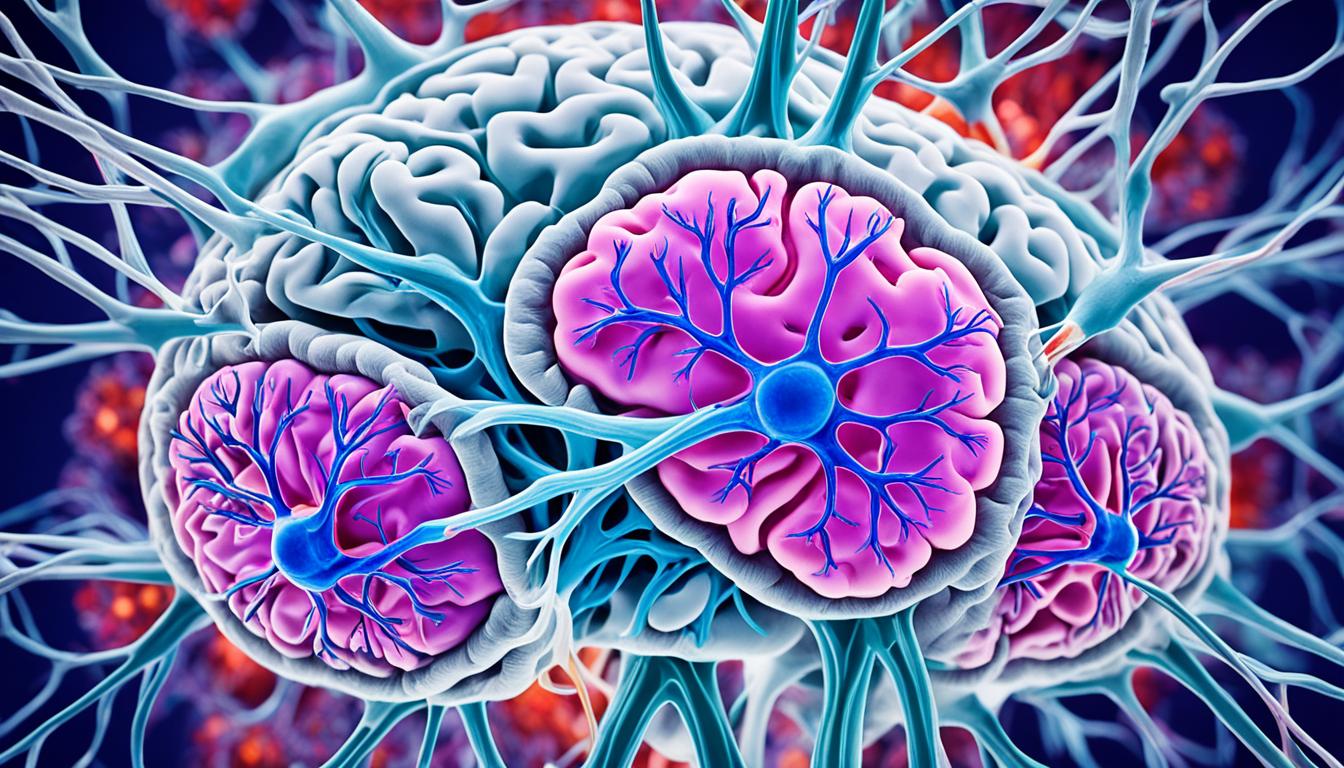Ependymoma is a rare brain or spinal cord tumor. It’s complex and needs specific treatment. This article gives an overview of its symptoms, causes, and treatments.
There are three grades of ependymoma. Grade 1 is low-grade, less likely to come back. Grade 2 is more likely to come back. Grade 3 ependymomas are fast-growing and serious.
The type and location of the ependymoma affect its prognosis. Symptoms vary but can include headaches, back pain, and issues with the nerves, sex, or digestive system.
The exact cause of ependymomas is unknown, but genetics may play a role. They mostly stay in the central nervous system. They’re most common in non-Hispanic whites.
The 5-year survival rate is 88.2%. Tumor grade, molecular type, and treatment response affect prognosis. Surgery is the main treatment, along with radiation or chemo.
Key Takeaways:
- Ependymoma starts in the central nervous system, affecting the brain or spinal cord.
- Symptoms depend on the tumor’s location and can include headaches and back pain.
- The cause of ependymoma is unclear, but it might be related to genetics.
- Tumors are classified into three grades, affecting their behavior and seriousness.
- The primary treatment is surgery, which can be followed by radiation, chemo, or clinical trials.
Diagnosis and Treatment of Ependymoma
Diagnosing ependymoma takes several steps to find the tumor and assess it. First, a doctor examines the patient to check for signs like headaches or balance problems. Imaging tests, like Magnetic Resonance Imaging (MRI), show the tumor’s details. This information helps doctors plan the best treatment.
If ependymoma is likely, more tests are done. A lumbar puncture tests the fluid around the brain for cancer cells. Finding these cells points to ependymoma.
The main treatment is surgery. This aims to take out as much of the tumor as safely possible. It may be possible to fully remove the tumor. But sometimes, only part can be taken out, or a biopsy is done to learn more. The goal is to protect the brain while removing the tumor.
After surgery, patients often get radiation therapy. This treatment kills any cancer cells left and decreases the chance of it coming back. It’s either given from the outside or by placing radioactive materials near the tumor.
Chemotherapy might also be used. This treatment involves powerful drugs that can be taken by mouth, through a vein, or injected around the brain. It helps kill cancer cells throughout the body.
Clinical Trials and Future Directions
Research and clinical trials keep making progress against ependymoma. They offer new ways to treat the cancer and improve patient outcomes. Clinical trials also allow patients to try advanced treatments and help researchers learn more about ependymoma.
Joining a clinical trial can offer access to new treatments. But, doctors carefully consider the possible benefits and risks before a patient joins. This is to protect the patient’s health.
| Treatment Options | Description |
|---|---|
| Surgery | The primary treatment for ependymoma, involving the removal of the tumor through various approaches such as complete resection, partial resection, or biopsy. |
| Radiation Therapy | Uses high-energy X-rays or other radiation sources to target and destroy remaining cancer cells after surgery. |
| Chemotherapy | Administered orally, intravenously, or directly into the cerebrospinal fluid to destroy cancer cells throughout the body. |
| Clinical Trials | Studies and trials conducted to explore new treatment options, refine existing therapies, and improve outcomes for ependymoma patients. |
Every ependymoma case is different. Decisions about treatment consider many factors, including the tumor’s grade, location, and genetic features. Patients and their healthcare team should discuss all options openly to make the best choice.
After treatment, watchful monitoring and, sometimes, rehab are important. This helps catch or manage any issues from the cancer or its treatment. With advances in medicine and support, the outlook for ependymoma patients is brighter, bringing hope for the future.
Outlook for Ependymoma Patients
The outlook for ependymoma patients changes based on the tumor’s grade and location. The patient’s age and health also play a big role. Even though the five-year survival rate is 88.2%, each patient’s path is unique.
For those with recurrent ependymoma, the situation is different. If the tumor comes back, beating it may require more tough treatments.
Yet another vital part to think about is the lingering effects of ependymoma and its treatments. The key isn’t just surviving but also living well in the long run.
Issues like heart and lung troubles, more cancers, and problems with thinking can show up. Seeing your doctor regularly can help catch these early and manage them well.

